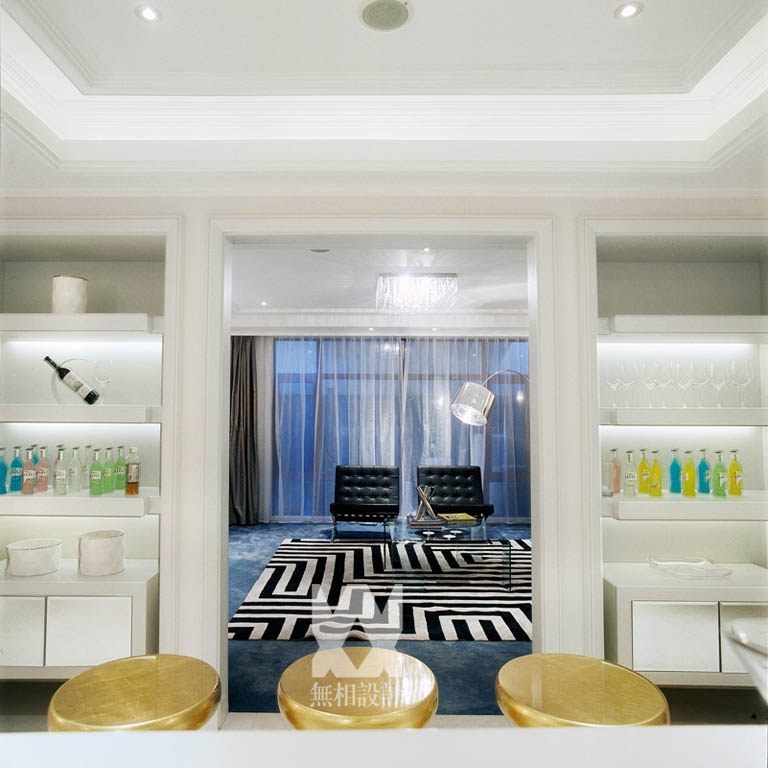Double Church For Two Faiths Kister Scheithauer Gross Architects And Urban Planners
2012-12-23 00:00
概念二教堂,一名新教徒和一名天主教徒,已在德国弗赖堡市新城区中心广场的一座建筑中建造。这座建筑内外都是用表面平整的混凝土设计的.多通道结构的设计使得将两座教堂的限制内墙移到一边成为可能,然后将由此产生的区域作为一个全基督教教堂空间。
Concept Two churches, one Protestant and one Catholic, have been erected in one building on the central square of a new district of the city of Freiburg, Germany. The building is designed in fair-faced concrete both on the inside and out. The design of the multi-aisle structure makes it possible to move the limiting inner walls of both churches to the side and then use the resulting area as an ecumenical church space.
整幢建筑物的整体高度为13米,部分为单层结构,有时会上升至4层。建筑的长度被限制在两个40米长的墙壁上,以自由的几何形式:墙在不规则的间隔中被轻微的“折叠”,并且向内和向外倾斜。在这个几何学中,西墙是双层墙,壁厚2米.墙的厚度加上倾斜的聚光,为教堂区域创造了一个明显的光。
The building, with an overall height of 13 metres, is partly a single-storey structure, progressing to four storeys at times. The length of the building is limited by two 40-metre long walls in a free geometrical form: the walls are slightly “folded“ at irregular intervals and are inclined inwards and outwards. In this geometry, the west wall is double-walled with a wall thickness of two metres. Together with the inclined embrasures, the thickness of the wall creates a marked light for the church area.
所有的墙,包括可以在栏杆上移动的内墙,都是由表面平整的混凝土制成的。可移动的墙壁差不多。八米高,由电动机驱动。每道墙的重量大约。二十二吨。这四堵墙最初是在实际建筑之外建造的。在重型电枢的帮助下,吊车将其悬挂在外墙上并固定在铁轨上。
All the walls, including the interior walls which can be moved on rails, are made from fair-faced concrete. The moveable walls are approx. eight metres high and are moved by electric motors. Each wall weighs approx. twenty-two tons. These four walls were first constructed outside the actual building. With the aid of heavy-duty armatures, they were then hoisted by crane over the outer walls and set on the rails.
所有外墙都是由轻骨料混凝土单独制成,以避免任何必要的保温层。墙差不多了。40厘米厚达到所需的隔热值。
All the outer walls are made monolithically from lightweight aggregate concrete to avoid any necessary thermal insulating layer. The walls are approx. 40 centimetres thick to achieve the heat insulation values required.
该建筑公司的任务是,尽管轻骨料混凝土和倾斜模板的粘度很高,但它的颜色几乎是不多孔的表面。另一项要求是在建筑物整体高度以上的一条连续直线上设计墙壁的裂缝。
The construction firm contracted had the task of creating an almost non-porous surface homogenous in colour despite the high viscosity of the lightweight aggregate concrete and the inclined form panels. Another requirement was to design the breaks in the walls in a single, continuous line over the overall height of the building.
建筑施工与负责静力学的公司合作,开发了一种混合建筑壳体结构,即由B25轻骨料混凝土用于外墙保温和B25普通混凝土制成的复杂的、静态的体系,用于其余的支撑结构。
Building Construction In conjunction with the company responsible for statics, a hybrid building shell construction was developed, in other words a complex, static system made from B25 lightweight aggregate concrete for thermally insulating the exterior fair-faced concrete walls and from B25 normal concrete for the remaining supporting constructions.
从二维建筑规划出发,建立了静力学三维模型.楼面平面图由有限元表示,每个单元包括墙的形状和质量。刚性结构在优化利用允许的地基压力的同时,将荷载分配到较低的地基土上。整个系统使准确确定墙的施工连接处的过载力成为可能。基于静力学计算的三维模型的进一步发展意味着可以创建模板的三维几何图,从而使建筑公司承包能够可靠地开发模板系统。
A statics 3-D model was developed from the two-dimensional architectural plans. The floor plans were represented by finite elements, each comprising the shape and quality of the walls. The rigid structure distributes the load onto the lower foundation soil while making optimum use of the permitted foundation pressure. The overall system makes it possible to accurately determine the carry-over forces to the construction joints of the walls. Further development on the 3-D model based on statics calculations meant that three-dimensional geometrical plans of the form panels could be created so that the construction firm contracted was able to reliably develop the form panel system.
生产出一种非常浅色的混凝土,由水泥和骨料的天然颜色制成,无需添加颜料,约。创建了8个样本墙。这些样本还被用来测试几何上最复杂的部分,如后倾墙。四米半。
Production To create a very pale concrete from the natural colours of cement and aggregates without the addition of pigments, approx. eight sample walls were created. These samples were also used to test concreting the most geometrically complex parts, such as backwards-inclining walls. The outer walls were concreted in three sections with a height of approx. four and a half metres.
这些模板在工厂用数字模式切割,并以完整的模块送到施工现场。
The form panels were cut at the factory using digital patterns and were delivered to the construction site in complete modules.
由于环境温度异常高(2003年夏季),加上墙厚大,混凝土凝结时的水化热导致温度升高,这意味着需要临时模板水冷。
Due to the unusually high ambient temperatures (summer 2003), in conjunction with the large wall thickness, the hydration heat when setting the concrete resulted in temperatures which meant that temporary formwork water cooling was required.
建筑服务工程(BuildingServicesEngineering)所有房间都安装了以城市地区供暖为动力的地板采暖系统。安装的雨水蓄水池扩大了卫生设施中可能使用的水的范围。
Building Services Engineering A floor heating system, powered by urban district heating, was installed in all the rooms. The rainwater reservoir deployed enhances the range of possible uses of the water in the sanitary facilities.
作为弗赖堡市作为低能耗建筑的榜样,所有公共建筑都是按照弗赖堡的计算方法按照低能耗建筑标准建造的。这导致常温地区的允许热能消耗值为65 kWh/(M2a)。现有能源消耗为59千瓦时/(M2a),因此显然符合规格。
Energy Saving As the city of Freiburg functions as a role model with regard to low-energy buildings, all public buildings are constructed in accordance with the Low Energy Building Standard as per the Freiburg calculation method. This results in a permitted thermal energy consumption value of 65 KWh/(m2a) for areas with normal temperature. The existing energy consumption is 59 KWh/(m2a) and thereby clearly meets the specifications.
 举报
举报
别默默的看了,快登录帮我评论一下吧!:)
注册
登录
更多评论
相关文章
-

描边风设计中,最容易犯的8种问题分析
2018年走过了四分之一,LOGO设计趋势也清晰了LOGO设计
-

描边风设计中,最容易犯的8种问题分析
2018年走过了四分之一,LOGO设计趋势也清晰了LOGO设计
-

描边风设计中,最容易犯的8种问题分析
2018年走过了四分之一,LOGO设计趋势也清晰了LOGO设计




















.jpg)

























.jpg)

.jpg)





























